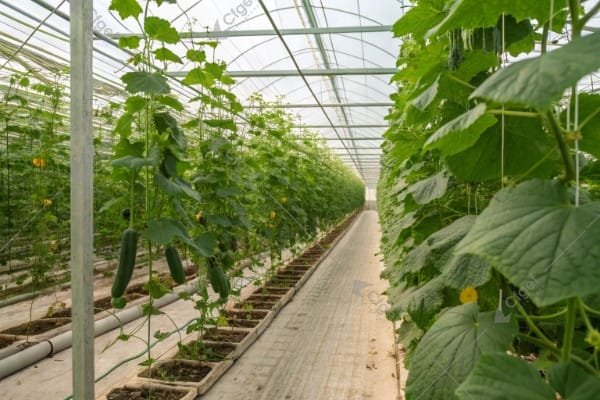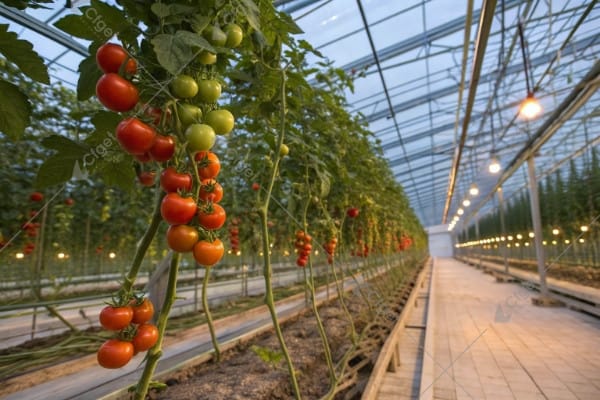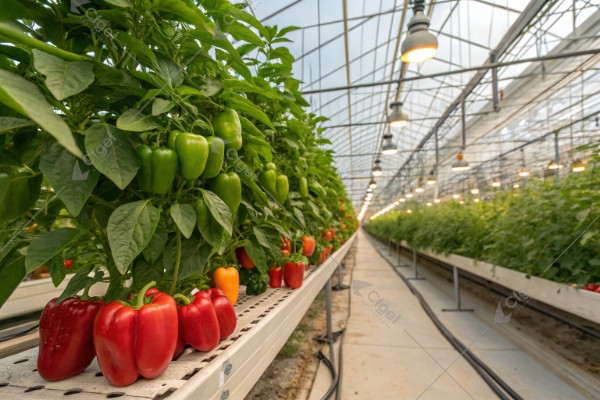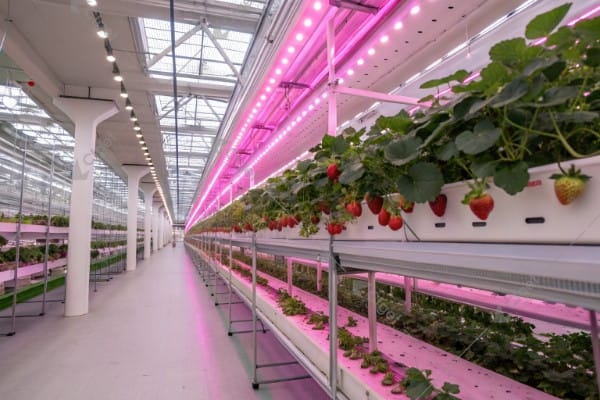Choosing the wrong greenhouse type can destroy your entire crop investment and leave you facing massive losses. After 28 years in the greenhouse industry, I’ve seen countless growers make this costly mistake.
Commercial greenhouses are classified based on four main criteria: intended use, structural design, roof configuration, and covering materials. Each classification serves specific crop requirements and climate conditions, making proper selection crucial for farming success.

Understanding these classification systems isn’t just academic knowledge. It’s the foundation that determines whether your greenhouse investment will generate profits or become an expensive failure. Let me share what I’ve learned from working with growers across more than 20 countries.
Based on Use: Such as Vegetable Growing or Floriculture?
Your crop choice drives every other decision in greenhouse design. I remember visiting a tomato grower in Thailand who tried using a flower greenhouse for vegetables. The results were devastating.
Vegetable greenhouses require different height clearances, ventilation systems, and structural support compared to floriculture facilities. Each crop type demands specific environmental controls and space configurations for optimal growth.
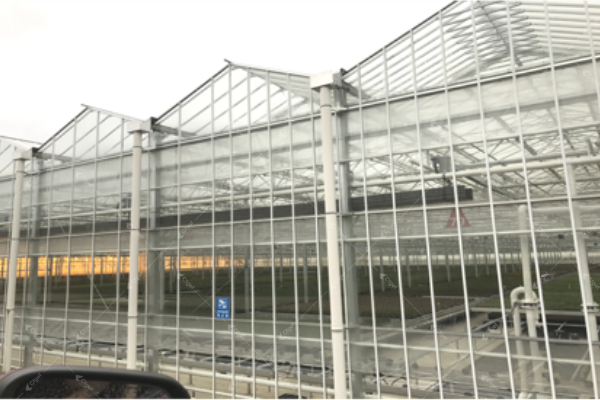
Vegetable Production Greenhouses
Vegetable greenhouses need specific design elements that flower growers never consider. The height requirements alone can make or break your operation. Tomatoes, cucumbers, and peppers grow tall and need vertical space for proper training systems.
I worked with a cucumber grower in the Netherlands who increased his yields by 40% simply by switching from a 4-meter to a 6-meter greenhouse height. The additional vertical space allowed better light penetration and air circulation throughout the canopy.
The structural load requirements differ significantly too. Vegetable crops often use heavy support systems, irrigation lines, and harvesting equipment. Your greenhouse frame must handle these additional loads without compromising safety or functionality.
Ventilation becomes critical with dense vegetable canopies. These crops generate more humidity and heat than most flowers. Without proper air movement, you’ll face disease pressure that can wipe out entire harvests. The ventilation area should represent at least 25% of the floor area for most vegetable operations.
Climate control systems in vegetable greenhouses operate differently than flower facilities. Vegetables often require more precise temperature and humidity control throughout different growth stages. The investment in environmental control equipment typically runs higher, but the returns justify the costs.
| Feature | Vegetable Greenhouse | Flower Greenhouse |
|---|---|---|
| Height | 4-7 meters | 3-5 meters |
| Ventilation Area | 25-30% of floor | 15-20% of floor |
| Structure Load | Heavy support systems | Light hanging baskets |
| Climate Precision | High precision needed | Moderate precision |
Floriculture Greenhouses
Flower production demands completely different priorities. Aesthetic presentation becomes as important as growing conditions. I’ve designed rose facilities where the visual appeal of the greenhouse itself contributed to the marketing value of the flowers.
Temperature uniformity matters more in flower production than absolute precision. Flowers respond poorly to temperature fluctuations, even small ones. A 2-degree temperature swing that vegetables might tolerate can cause flower quality issues that reduce market value by 30% or more.
Light management in flower greenhouses focuses on quality rather than quantity. Many flowers require specific light spectrums during different growth phases. The greenhouse covering material and internal shading systems must accommodate these requirements without creating excessive heat buildup.
Humidity control becomes more complex with flowers. Too much humidity promotes disease, but too little affects flower quality and shelf life. The balance requires sophisticated environmental control systems that can maintain narrow humidity ranges throughout the production cycle.
Based on Structural Features: Such as Freestanding or Gutter-Connected?
Structure determines everything from initial costs to long-term maintenance expenses. The wrong structural choice can double your heating costs and halve your growing space efficiency.
Freestanding greenhouses offer design flexibility and easier expansion, while gutter-connected structures provide better climate control and lower per-square-meter costs. The choice depends on site constraints, budget, and operational requirements.
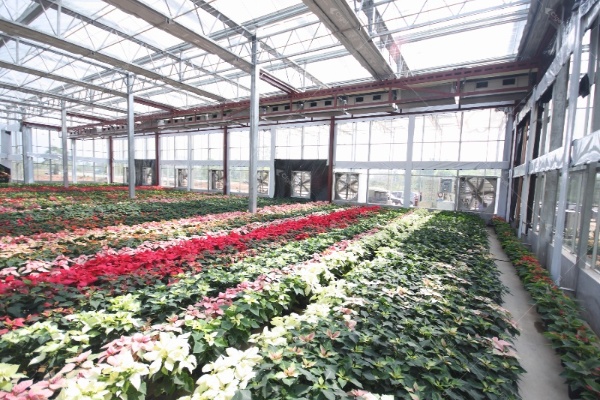
Freestanding Greenhouse Systems
Single-bay freestanding greenhouses work best for specialized operations or difficult sites. I installed a freestanding system for a research facility in Kazakhstan where extreme wind conditions made connected structures impossible.
The structural independence offers advantages that connected systems cannot match. Each house operates as a separate climate zone, allowing different crops or growth stages in adjacent structures. This flexibility proves valuable for growers who need to isolate different varieties or maintain separate environmental conditions.
Maintenance becomes simpler with freestanding structures. When one house needs repairs or modifications, the others continue operating normally. I’ve seen connected facilities where a single structural failure forced the shutdown of multiple growing zones.
Expansion costs less with freestanding systems. Adding new growing space doesn’t require modifications to existing structures. The modular approach allows gradual growth that matches cash flow and market development.
However, freestanding structures cost more per square meter of growing space. The individual structural elements and separate foundation systems increase material and labor costs. Energy efficiency also suffers because each structure has more exposed surface area relative to growing space.
Wind resistance becomes critical with freestanding designs. The individual structures face full wind loads without the mutual support that connected systems provide. Foundation requirements increase accordingly, adding to construction costs.
| Aspect | Freestanding | Gutter-Connected |
|---|---|---|
| Initial Cost/m² | Higher | Lower |
| Climate Control | Independent zones | Shared systems |
| Maintenance | Individual units | Interconnected |
| Expansion | Modular addition | Structural integration |
| Energy Efficiency | Lower | Higher |
Gutter-Connected Multi-Span Systems
Connected greenhouse systems deliver the best economics for large-scale operations. The shared structural elements and integrated systems reduce costs while improving functionality. Most commercial operations above 5,000 square meters choose connected designs.
Climate control efficiency improves dramatically with connected structures. The larger air volume provides better temperature stability and reduces heating and cooling costs. I measured 30% lower energy consumption in a connected facility compared to equivalent freestanding houses.
Labor efficiency increases in connected systems. Workers move between growing areas without exposure to weather conditions. Equipment and materials transport becomes easier through internal corridors and service areas.
The structural sharing reduces material costs significantly. Gutter systems, foundations, and frame elements serve multiple growing bays. The economies of scale become more pronounced as facility size increases.
However, connected systems create operational challenges. Disease or pest problems can spread more easily between connected zones. Climate control becomes more complex when different crops require different conditions in adjacent bays.
Expansion requires careful planning with connected structures. Adding new sections must integrate with existing systems without disrupting ongoing operations. The structural engineering becomes more complex as facilities grow larger.
Based on Roof Type: Such as Venlo or Dome-Shaped?
Roof design affects everything from light transmission to structural costs. I’ve seen identical crops perform completely differently under different roof configurations in the same climate conditions.
Venlo-type roofs maximize light transmission and provide excellent drainage, while dome-shaped roofs offer superior structural strength and wind resistance. Each design serves specific climate conditions and operational requirements.
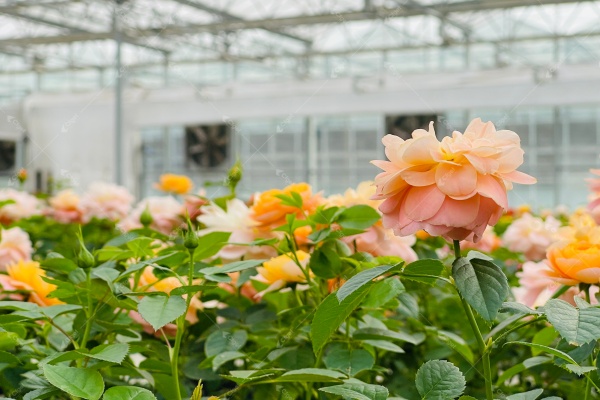
Venlo-Type Roof Systems
Venlo roofs represent the standard for modern commercial greenhouses. The sawtooth profile maximizes light transmission while providing excellent structural efficiency. Most European and North American commercial facilities use Venlo designs.
Light transmission reaches maximum efficiency with Venlo profiles. The steep roof angles shed condensation quickly, preventing light-blocking water droplets. I measured 15% higher light levels inside Venlo houses compared to curved roof designs during winter months.
Ventilation performance excels with Venlo systems. The ridge and sidewall vents create natural air circulation patterns that maintain uniform temperatures throughout the growing space. The thermal buoyancy effect works more efficiently with the peaked roof profile.
Structural efficiency makes Venlo roofs cost-effective for large spans. The triangular profile distributes loads efficiently, reducing material requirements. Standard components and proven engineering reduce design and construction costs.
However, Venlo roofs require precise manufacturing and installation. The multiple glass panels and sealing systems demand high-quality craftsmanship. Maintenance costs can increase if sealing systems fail or structural settlement occurs.
Snow load capacity becomes critical in northern climates. The steep roof angles help shed snow naturally, but extreme loads can still cause structural problems. Proper engineering for local snow conditions is essential.
Dome and Curved Roof Designs
Curved roof greenhouses offer advantages in extreme climate conditions. The aerodynamic shape reduces wind loads and provides superior structural strength. I recommend curved roofs for locations with high wind speeds or seismic activity.
Structural strength reaches maximum efficiency with curved designs. The arch shape distributes loads naturally, reducing stress concentrations. Material requirements often decrease compared to peaked roof systems of equivalent span.
Wind resistance improves dramatically with curved profiles. The smooth surface reduces turbulence and wind loading. Facilities in hurricane-prone areas often specify curved roofs for improved storm resistance.
Construction simplicity can reduce installation costs. Fewer structural connections and simpler geometry make curved roofs easier to build correctly. Quality control becomes more manageable with fewer critical joints and sealing points.
Light transmission suffers with curved roof designs. The varying angles create reflection losses and condensation problems. Internal shading systems become more complex to design and install effectively.
Ventilation requires different approaches with curved roofs. Natural ventilation patterns change, often requiring mechanical systems for adequate air movement. Energy costs may increase to maintain proper growing conditions.
| Roof Type | Light Transmission | Wind Resistance | Construction Cost | Maintenance |
|---|---|---|---|---|
| Venlo | Excellent | Good | Standard | Moderate |
| Curved | Good | Excellent | Lower | Lower |
| Dome | Fair | Superior | Higher | Lower |
Based on Covering Material: Such as Glass or Plastic Film?
Covering material determines light quality, energy efficiency, and operational lifespan. The wrong choice can cost you thousands in energy bills and replacement expenses over the greenhouse lifetime.
Glass provides superior light transmission and durability but requires higher initial investment, while plastic films offer lower costs and better insulation but need regular replacement. The choice depends on crop requirements, climate conditions, and economic factors.
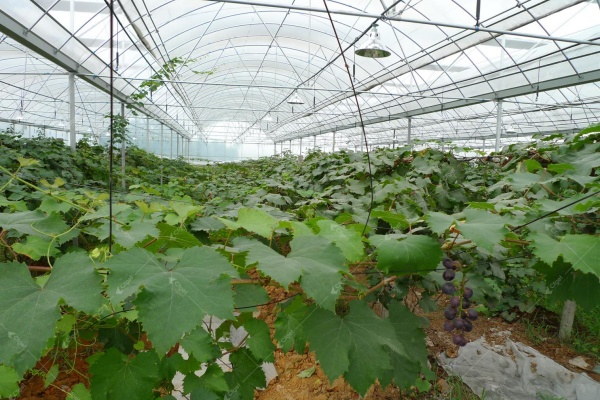
Glass Covering Systems
Glass remains the premium choice for high-value crop production. The optical clarity and durability justify the higher initial costs for most commercial operations. I’ve installed glass systems that maintained excellent light transmission after 20 years of operation.
Light transmission reaches maximum levels with high-quality glass. Modern low-iron glass transmits over 90% of available light, providing optimal growing conditions. The consistent optical properties don’t degrade over time like plastic materials.
Durability makes glass the most economical long-term choice. Properly installed glass systems last 25-30 years with minimal maintenance. The stable material properties eliminate the replacement cycles required with plastic coverings.
Energy efficiency improves with modern glass systems. Double-glazed units provide excellent insulation while maintaining high light levels. The thermal properties remain constant throughout the system lifespan.
However, glass requires higher initial investment. Material and installation costs run 2-3 times higher than plastic alternatives. The structural requirements also increase due to the additional weight and wind loads.
Hail damage poses the primary risk with glass systems. Large hailstones can cause extensive damage that requires immediate replacement. Insurance coverage becomes important in hail-prone regions.
Safety considerations require tempered or laminated glass in most applications. The safety treatments add cost but prevent injury risks from broken glass. Proper installation techniques become critical for long-term safety.
Plastic Film Systems
Plastic films provide the most economical entry point for greenhouse production. The lower initial costs allow smaller operations to access controlled environment growing. I’ve helped many beginning growers start with film houses and upgrade to glass as their operations expanded.
Installation costs stay minimal with film systems. The lightweight materials require less structural support and simpler installation procedures. Labor costs decrease significantly compared to glass installation.
Insulation properties often exceed glass performance with double-layer film systems. The air space between film layers provides excellent thermal resistance. Heating costs can decrease 30-40% compared to single-layer glass systems.
Light diffusion improves with many film materials. The scattered light penetrates plant canopies more effectively than direct sunlight through clear glass. Some crops respond with increased yields under diffused light conditions.
However, replacement cycles increase operational costs. Most films require replacement every 3-4 years as light transmission degrades and material strength decreases. The ongoing replacement costs can exceed glass systems over 15-20 year periods.
Weather resistance varies significantly between film types. Wind damage, UV degradation, and thermal expansion create maintenance challenges. Proper selection and installation become critical for acceptable performance.
Condensation management requires special attention with film systems. The flexible material can sag under condensation loads, creating drip points that damage crops. Anti-drip treatments and proper ventilation become essential.
| Material | Initial Cost | Lifespan | Light Transmission | Energy Efficiency |
|---|---|---|---|---|
| Glass | High | 25-30 years | Excellent | Good |
| Double Film | Low | 3-4 years | Good | Excellent |
| Polycarbonate | Medium | 10-15 years | Good | Very Good |
| Acrylic | Medium-High | 15-20 years | Excellent | Good |
Conclusion
Commercial greenhouse classification depends on four key factors: crop requirements, structural needs, roof design, and covering materials. Understanding these criteria ensures profitable greenhouse investments that match your specific growing conditions and business goals.

